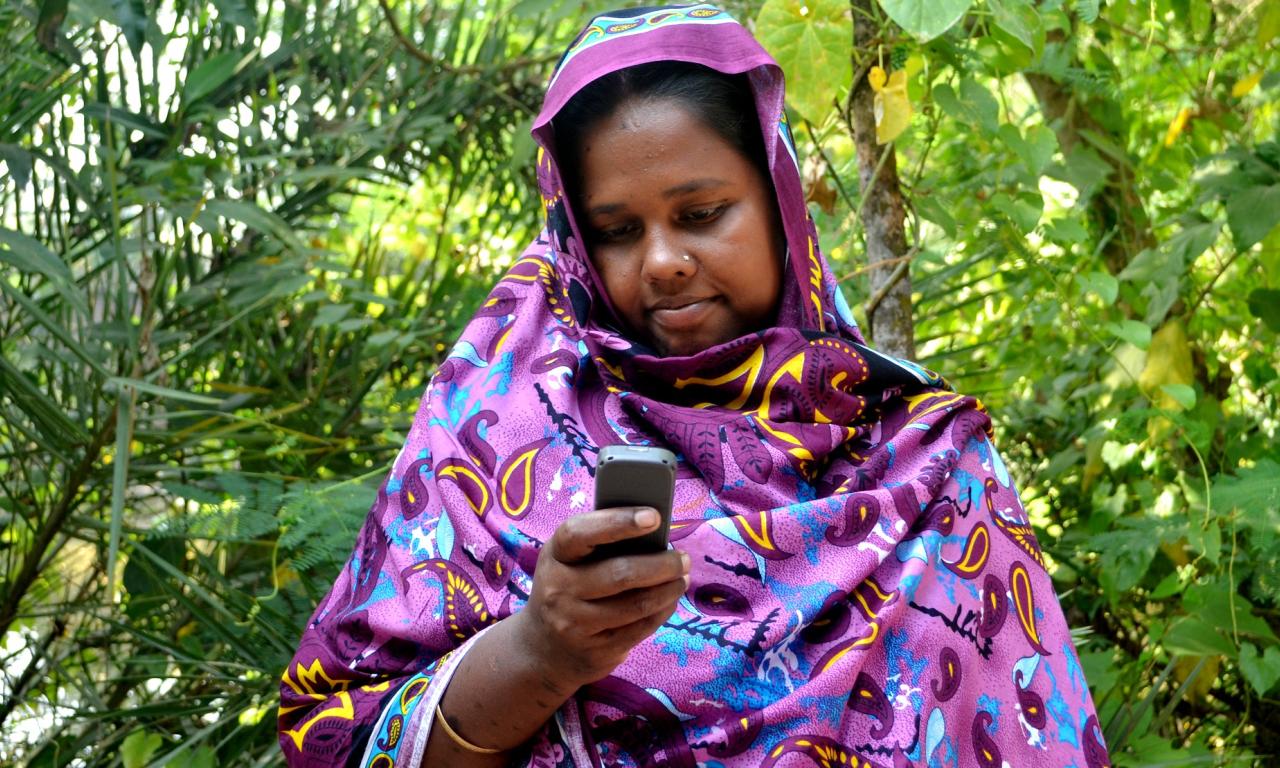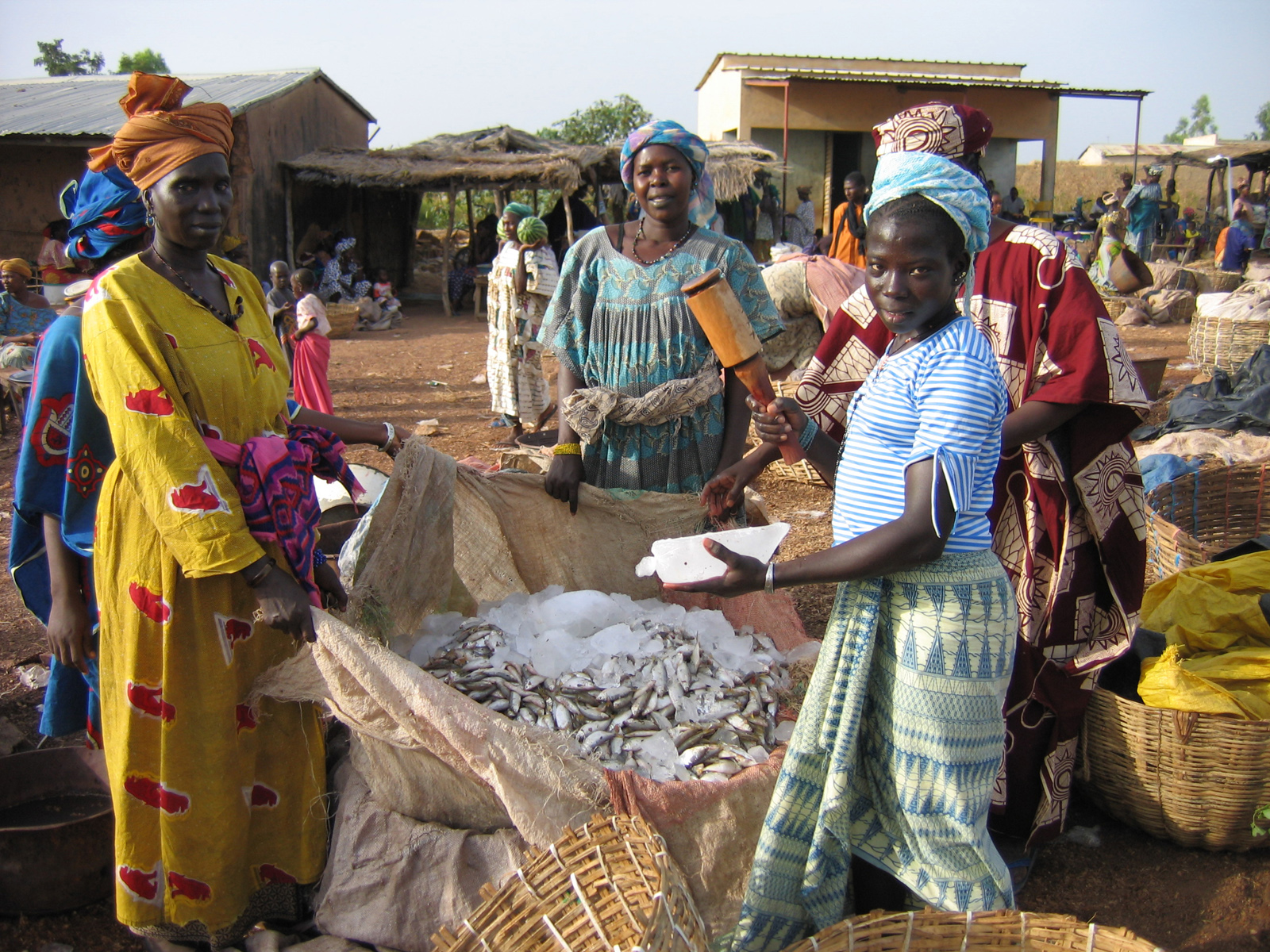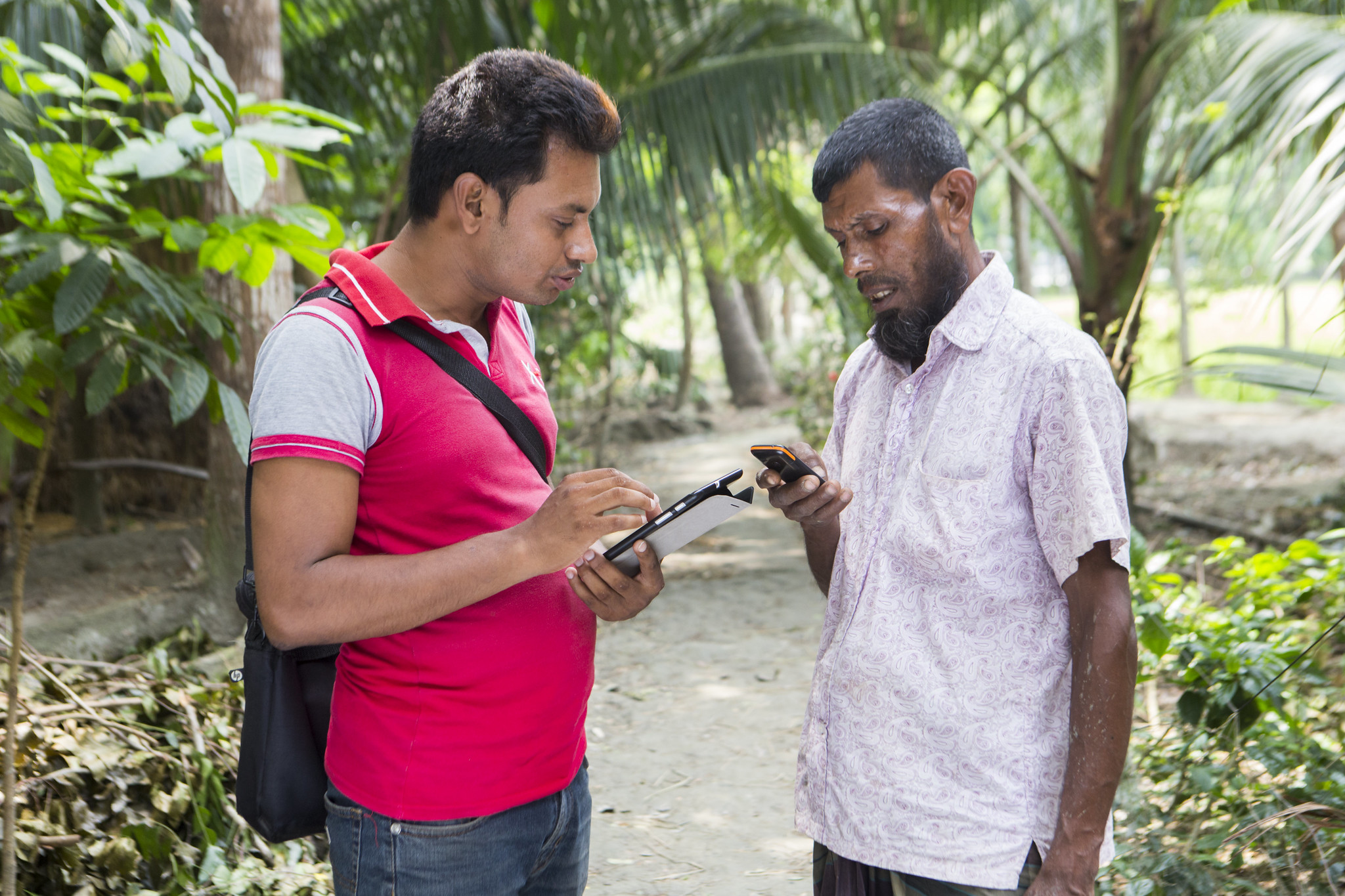
- Information and communication technologies (ICTs) have diverse applications in sustainable development
- ICTs can be used to improve data collection on informal small-scale fisheries and reveal their true contributions to food and nutrition security
- Yet not all fishers and fish workers have equitable ability to use and leverage ICTs to improve their livelihoods
While certain uses of mobile technologies are well understood, their impacts on sustainable development elicit further investigation. Information and communication technologies (ICTs) have the potential to advance human well-being and ecological sustainability, but, if applied incorrectly in development initiatives, they can also lead to larger socioeconomic disparities.
In low- and middle-income countries, ICTs can be used to assist small-scale fishers and fish workers by improving their access to information and data. However, illiteracy and unreliable internet connectivity must be addressed to ensure already marginalized fishers are not left behind.
A new report produced by WorldFish and FAO, Information and communication technologies for small-scale fisheries (ICT4SSF), evaluates the opportunities and challenges presented by ICTs in forging a more equitable world, with a focus on fisheries and aquatic food value chain actors.
ICTs encompass a diverse set of technological tools used in communication, such as smartphones and their applications, that can be used to create or exchange information. The information may then be wielded to improve rural livelihoods and inform government fisheries policy.
The ICT4SSF report reviews six case studies from across the globe to present evidence for how these digital tools might enable and support development outcomes, specifically the UN Sustainable Development Goals and FAO’s Voluntary Guidelines for Securing Sustainable Small-Scale Fisheries in the Context of Food Security and Poverty Eradication (SSF Guidelines).
The principles of the SSF Guidelines are based on international standards of human rights and responsible fisheries, with particular attention paid to marginalized groups. The most vulnerable people tend to be the least represented in digital data, and the report seeks to understand the influence of ICTs on rural livelihoods.
“I hope this report will be a reference tool for development officers and NGO workers to leverage investment in ICTs to support vulnerable fisheries actors while reinforcing the importance of homegrown, locally relevant ICT design and implementation,” said Alexander Tilley, WorldFish senior scientist and the report’s lead author.
The communities dependent on small-scale fisheries are often characterised as some of the world’s poorest and most marginalised groups, but digital technologies can be leveraged to alleviate obstacles to their inclusion and well-being. While small-scale fisheries are already a key source of employment, income and nutrition for many rural communities, their full potential has yet to be harnessed.
Diverse applications for small-scale actors

One practical ICT application is for improved data collection and accuracy: they can be used to better understand the role of small-scale fisheries in food production and security. Research suggests that catches from small-scale fisheries are often underreported and thus underestimated in official statistics. By empowering and involving local actors in the reporting process, researchers can gain a more accurate estimate of fisheries landings and support community driven, co-management of aquatic resources.
The ICT4SSF report reviewed a new open-source monitoring system in Timor-Leste, PeskAAS, that attempts to resolve insufficient catch data using community-based monitoring. Data collectors were hired at community fishing sites around Timor-Leste, where they recorded and submitted details on fisheries landings using mobile technologies.
Armed with new high-resolution data and with assistance from WorldFish, the Government of Timor-Leste revised its fisheries law and has drafted a new national fisheries strategy through nationwide consultation with fishers.
“This previously impossible visualization of fisheries as a key livelihood activity for hundreds of rural communities has generated the momentum and political will needed to strengthen the sector to achieve national development priorities and build inclusive governance of aquatic resources,” said Tilley.
Similar technologies have the potential to shine light on the role of women in fish value chains, whose informal contributions are often rendered invisible in statistical reporting. Data collection tends to focus on male-dominated fishing activities, but women’s roles often begin once fish are brought ashore for processing and retail.
Trafiz, a mobile application used to record catches and enable data-driven fisheries management, allows retailers and fish suppliers to collect and submit traceability data. While the app was originally designed to record catches and transactions, its functionality has been expanded to offer financial advice due to its high adoption among fisherwomen.
A growing number of fishers are also looking for ways to use ICTs to shorten value chains and sell directly to consumers, and digital marketplaces are being established to facilitate this. While increased connectivity can improve women’s financial independence and their access to livelihoods, it also risks further marginalization.
“Small-scale fishing communities, groups and individuals are not equally capable of accessing or using digital tools and services. It is thus imperative that ICT design and development is paired with capacity building in digital literacy to avoid further exacerbating inequalities or creating new ones,” said Matthew Roscher, the report’s co-author.
With the help of the social enterprise Hathay Bunano Proshikshan Society, under the USAID-funded ECOFISH project, Bangladeshi fisherwomen learned to use ICTs to develop alternative livelihoods. During the country’s annual three-month closure of hilsa fisheries, they crocheted toys and clothes for export markets. Mobile technology allowed the women to access designs and attain better prices, while the bKash mobile banking service gave women control of their profits and finances.
“While the project conformed to existing gender norms, ICTs were also shown to be powerful tools to disseminate messaging that rejects these gendered stereotypes. In the future, it will be important to incorporate gender-transformative strategies that enable women and their families to critically examine the harmful norms that obstruct women from pursuing any livelihood they desire,” said Afrina Choudhury, a gender specialist at WorldFish.
Ensuring use and access

The report’s authors emphasized equitability when planning initiatives and interventions for the use of ICTs. A participatory approach, where the target community is involved in the design and implementation of the ICT, is needed to ensure the technology will be adopted and maintained.
“Collaboratively identifying a problem that can be solved through ICTs is the ideal starting point,” said Roscher. “This is the opposite of the top-down technocratic approach that comes in with a prescribed solution before the problem is understood.”
Technological adoption is often a nonlinear process, and the more collaboration and engagement with the community from the project’s inception, the better. On-site demonstrations were deemed the most the effective way to engage individuals; when results were tangibly demonstrated and tied to a direct economic incentive, like improved catches and household income, ICT adoption increased across communities.
Incorporating local contexts, building on existing networks and data management systems and targeting transparency and trust objectives also helped to sustain ICT adoption.
If designed and implemented properly, ICTs can drive larger socioeconomic and environmental gains through inclusive governance and more efficient supply chains. Novel digital technologies can support gender equality and human well-being in marginalized fishing communities, as long as they are user-centered and culturally appropriate, Roscher explained.
“By plugging significant historical data gaps, these technologies are already supporting science-based, gender-sensitive policy decisions for governing vital aquatic resources and empowering communities across the Global South,” added Tilley.
